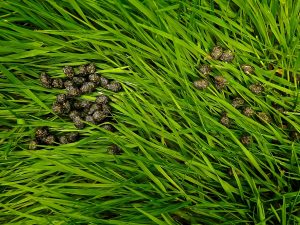Scat (animal droppings) is an often overlooked sign of which animals are using your backyard or favorite trail. Not only does scat tell you what animals have been in the area, it can also offer clues to what they have been eating. Scientists studying scat can actually determine the health of individual animals by analyzing the chemical content.
Within scat you’ll often find seeds, plant parts, berries, and other indicators of the animal's diet. Predator scat often contains large amounts of hair and bones from the prey. Rabbit and other herbivore scat usually contains only plant material. Omnivores like bears and coyotes may have a mix of fur and plant material.
Not only do the contents of scat vary from species to species, but the size and shape can be a unique identifying feature. Take a look at the photos below for clues on identifying animal scat.
Black Bears are omnivorous, their diet consists of animals, nuts, berries, grasses, insects and aquatic life. Evidence of these will show in their scat. Often times bear scat may contain partially undigested parts of only one food source. Their droppings are one of the largest being 1 to 2 inches in diameter. Scat may also appear as a loose pile with no particular shape when they are feeding heavily on berry crops in late summer to early fall.
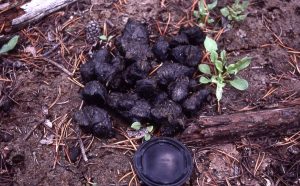
Bobcat scat is up to 4 inches long and 3/4 of an inch in diameter, segmented with blunt ends. Evidence of scratched leaf litter and soil with scat in the scratched out area will indicate cat droppings. Scat may or may not be covered over with leaves or soil.
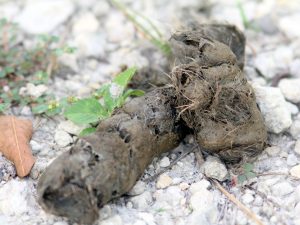
Mountain Lion scat can be up to 5 inches in length and 1 1/4 inches in diameter. Segmented with blunt ends evidence of bones and hair will be present. Scratched out areas of leaf litter and soil with droppings in them indicate the cat family. Mt. Lion scat is much larger than that of the Bobcat and as well may or may not be covered over with scratchings.
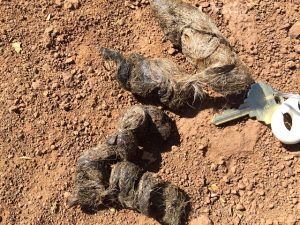
Coyote scat may be up to 4 inches long & 3/4 of an inch in diameter. Their scat may contain evidence of hair, bones, fruits & berries. Colors vary from their diet.
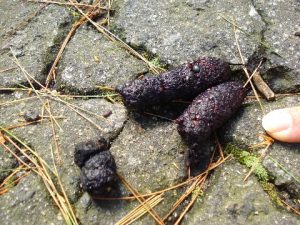
Fox scat is approximately 2 inches long & 1/2 inch in diameter with pointy ends. It may contain hair, bones, insects, berry seeds & undigested fruits. Fox will usually deposit their scat on a prominent object such as a rock, stump or log to mark their territory.
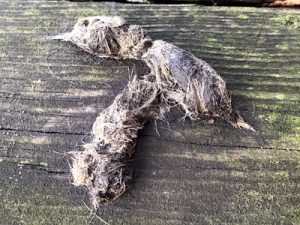
Skunks are omnivores eating plants, animals and insects. Insects make up the majority of their diet and their presence will be found in their droppings, often times their scat will contain only insect parts. Small bones, hair and plant matter may also be evident at times. Their scat is blunt ended 3/4 to 1 inch in diameter.
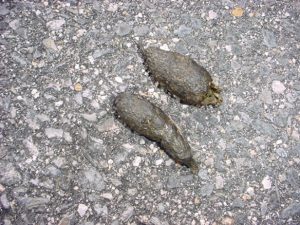
Deer scat is oval in shape, pellet like 1/2 to 5/8 inches in diameter, black in color scattered piles. It may also be found clumped together when their summer & fall diet consists of high moisture foods such as berries, apples & other succulent plants. Their winter scat is lighter in color, consist of mainly woody fibers & is quite hard.
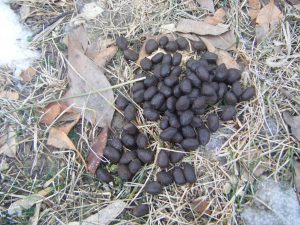
Rabbit scat is vary similar in color shape and size, being about 1/4 to 3/8 of an inch in diameter. The scat is somewhat rough textured dark to light brown in color. It may be found in a scattered pattern rather than in piles as they defecate one pellet at a time while they continue to move. Scat found in piles would point to a feeding spot where the animal remained stationary.
